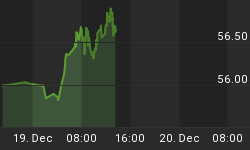Here is an extract from commentary posted at www.speculative-investor.com on 31st July 2003:
Below is the long-term chart of the Swiss Franc that was included in our 16th April commentary. We haven't bothered to update the chart because the picture looks very much the same today as it did back in April.

We used the above chart in the earlier commentary to come up with a rough target, in terms of both time and price, for the bull market in the SF that began in October of 2000. Our reasoning was simply that the SF has been in a long-term up-trend since the early 1970s, but within that long-term up-trend there have been two (completed) cyclical bull markets and two cyclical bear markets. Each of the cyclical bull markets reached the top of the long-term upward-sloping channel and lasted 8-10 years while each of the cyclical bear markets ended at the channel bottom and lasted 6 years. If we assume that this cyclical behaviour is going to continue, an assumption that seems reasonable given the price action of the past 3 years and the dollar's poor fundamentals, then the SF will peak in the 2008-2010 period at a SF/US$ rate of greater than 1. In other words, we think the bear market in the US$, relative to the SF, is presently less than half over in terms of both time and price.
Now, as we've explained on many occasions in the past, there is a high positive correlation between the gold price and the SF. We expect this positive correlation to continue, so on this basis it is probable that the long-term trend for gold will remain bullish until 2008-2010.
Despite the high positive correlation between gold and the SF, which, by the way, has been as strong over the past 2 years as it has been at any time over the past 30 years, the long-term gold chart looks different from the long-term SF chart shown above. This is perhaps because gold is a less-liquid market and therefore tends to make larger moves in both directions. In any case, the below chart shows that gold, like the SF, has been in a long-term bull market against the US$ since the early 1970s and that another leg in gold's long-term bull market began over the past 3 years. As opposed to a steady progression within an upward-sloping channel, as has been the case with the SF, gold's long-term chart can best be described as a 5-wave structure. The way we see it, Wave 3 was complete at the 1980 blow-off top, Wave 4 was complete at the 1999 bottom, and Wave 5 to a new all-time high is currently underway.

It is important to keep the above 'big picture' views in mind at all times and to continue checking the evidence against these views to make sure they remain valid. However, it really isn't enough to simply understand that the gold price is probably going to reach a long-term peak in 5-7 years time. This is because at some point there is probably going to be a large counter-trend move lasting 1-3 years, which, unless you are a masochist, you will want to avoid. For example, the SF rose strongly during the 1972-1975 period but then spent 2-3 years trading sideways before rocketing higher to its major peak. And, during this period of currency market stability that occurred between the two big dollar declines of the 1970s the gold price fell by around 50% and the average gold stock fell by around 70%. If you are an investor in gold and gold stocks at the present time it is therefore important to understand what could bring about a multi-year period of stability in the currency market.
We have recently discussed the role that the Fed will potentially play in bringing about a lengthy period of currency market stability. The driving force behind gold's bull market is falling confidence in the US$ in particular and fiat currency in general, but no market moves from the point of maximum confidence to the point of minimum confidence in a straight line. We are therefore anticipating that a substantial counter-trend move in 'dollar confidence' will begin at some point over the next 12 months. As explained in last week's commentary, such a period is likely to begin when the markets come to believe that the Fed has a handle on the inflation problem.















